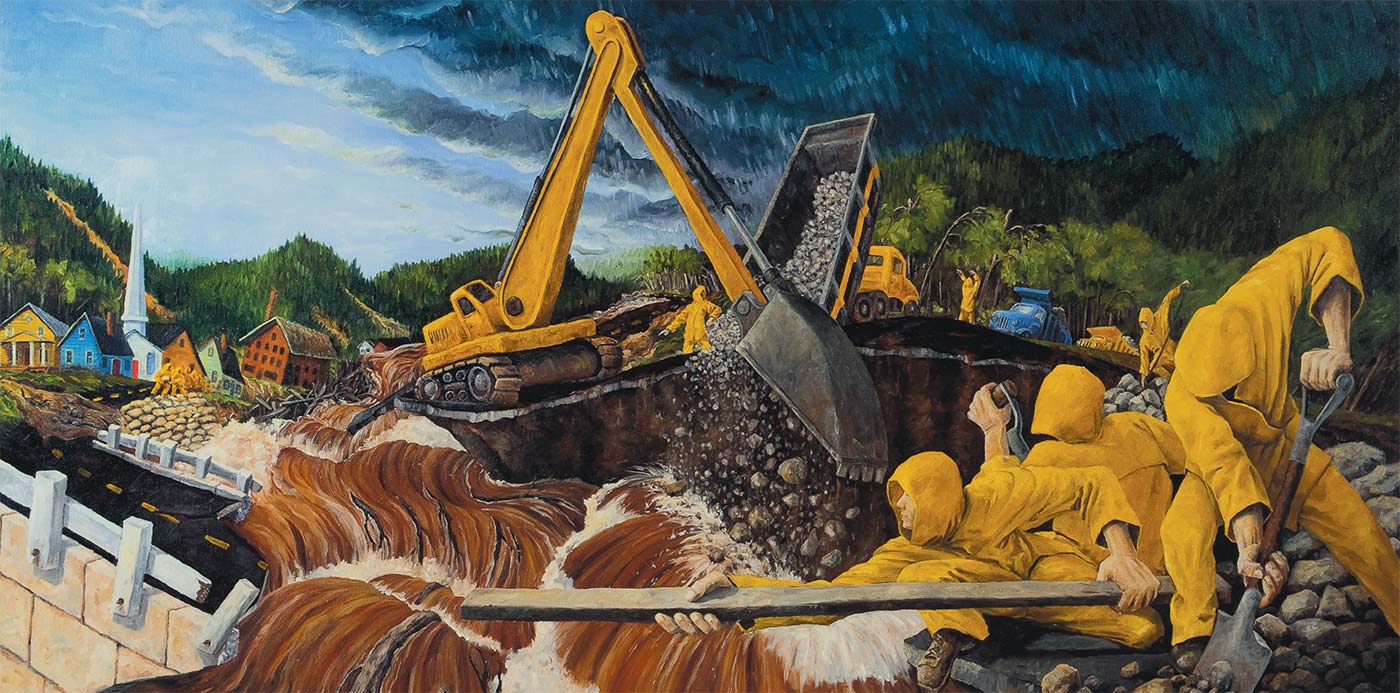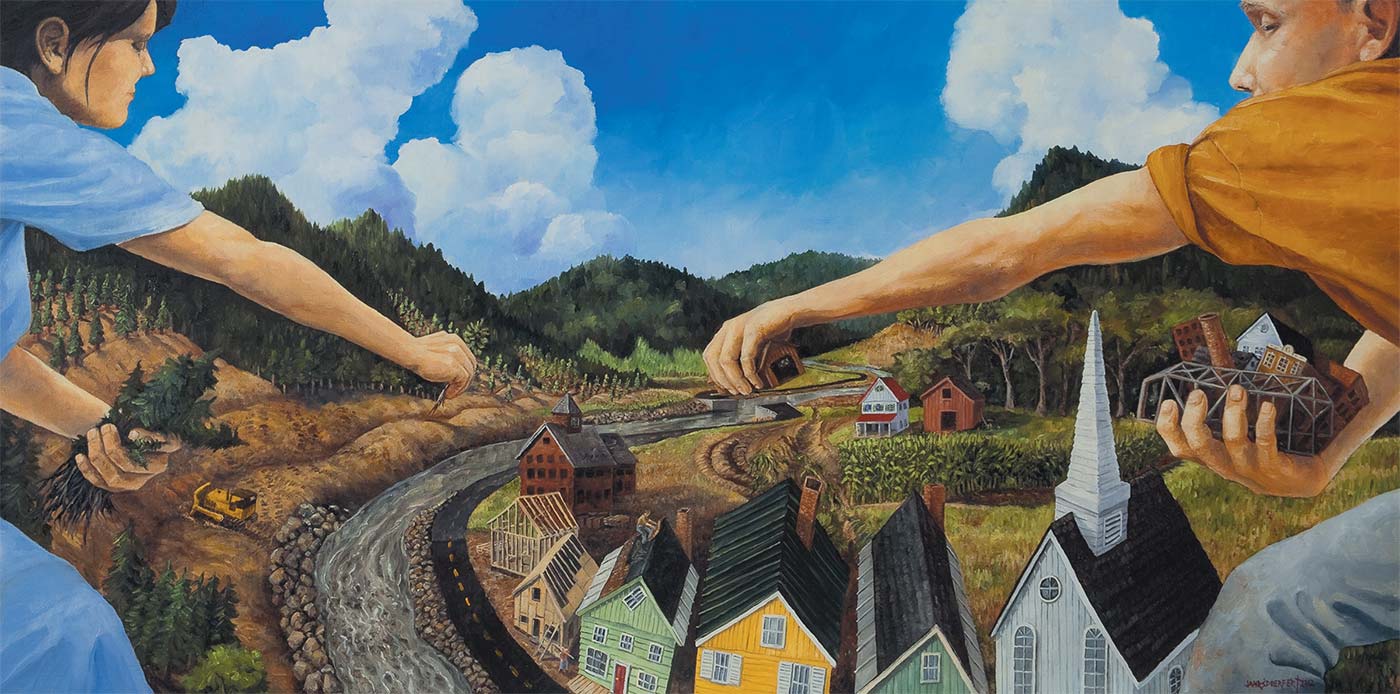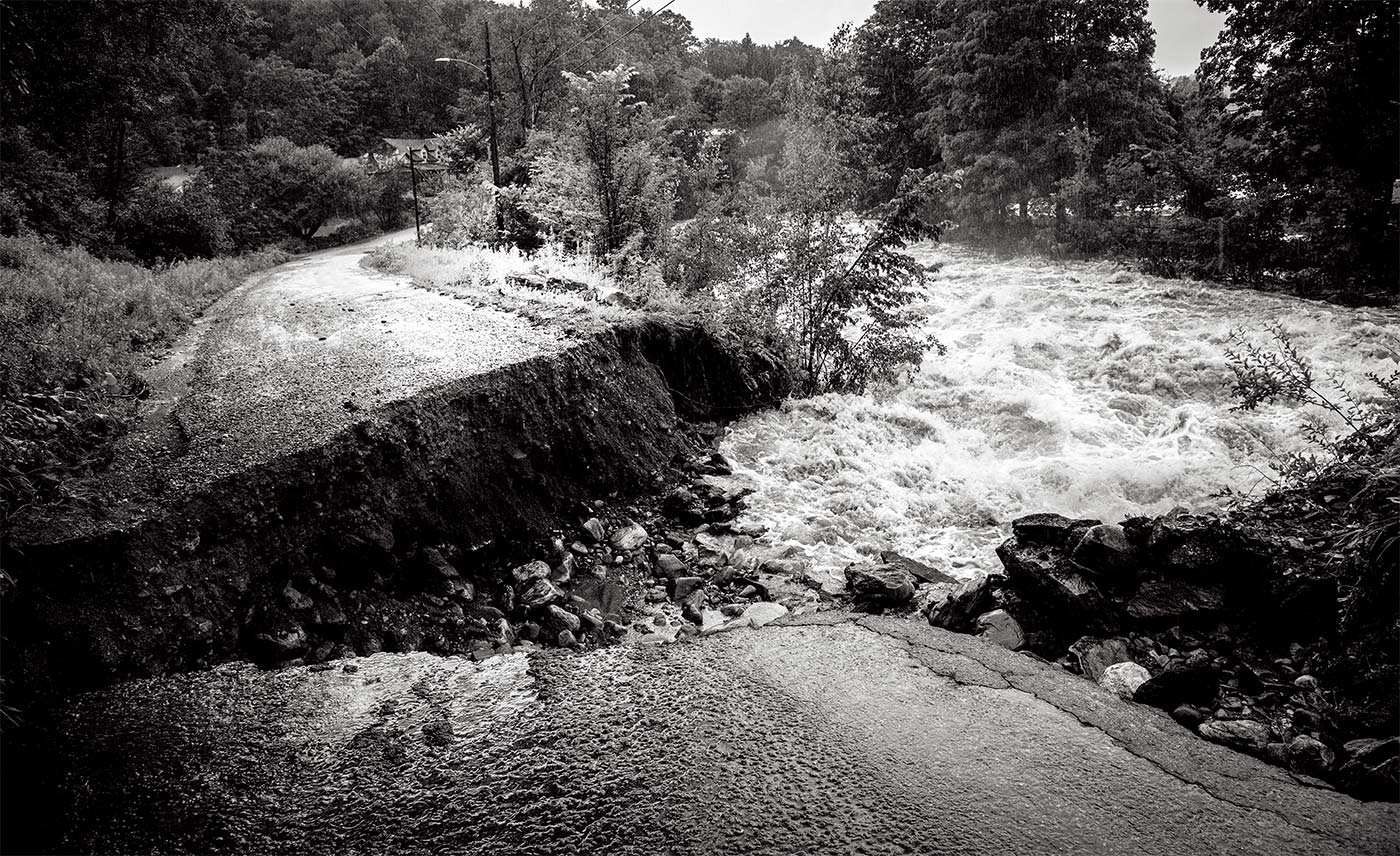From the Managing Editor: Stories of the Flood
Compassion. Collaboration. Commitment. Tragedy has a way of bringing out the best amidst the worst.
On July 10 and 11, many parts of Vermont experienced catastrophic flash flooding, road and bridge washouts, and mudslides resulting from 3 to 9 inches of heavy rainfall over a 48-hour period. Hardest hit were communities along the spine of the Green Mountains and other areas where the Lamoille, Winooski, and smaller rivers jumped their banks and wreaked havoc. Damage from this Great Vermont Flood of July 2023 rivaled—and in some areas—exceeded that caused by Tropical Storm Irene on August 28, 2011.
Morgan Churchill, 45, is the fourth generation to steward Wonder Why Farm in the hills above Cabot, with his wife, Jennifer Goodrich. When the gravel and dirt roads around his farm got washed out and became impassable by Monday evening July 10, Morgan did what any dairy farmer would do: he fired up his excavator and cleared his road so the Stonyfield milk truck could make its pick-up in the morning.
And then, he kept going. In the dark as the rain continued to fall, Morgan and another friend in an excavator met at the center of town to extricate the tangle of trees and debris that threatened the bridge. Using a combination of excavator, bulldozer, and dump truck, Morgan steadily repaired and rebuilt the town’s lifelines. He dug and replaced culverts, set up temporary bridges, moved rock into place. By the end of two weeks, Cabot’s roads were restored, the work done by people who live right there.
“Why wouldn’t I do it?” he shrugged. “The road crew was down to two people and needed help.”
The power of community coming together to counter the power of water. Never underestimate either.
Morgan is just one of the myriad stories that have emerged from the July deluge, examples of neighbors helping neighbors, strangers showing up to offer assistance, asking nothing in return.

Clearing Skies/ Recovery Begins, 2011 (detail) by James Jahrsdoerfer (1953–2015). Giclée on canvas, 24 x 50 in. Courtesy of For the Love of Vermont: The Lyman Orton Collection, Manchester, Vermont, 2023. Information about the show and the book is at www.fortheloveofvermont.com.

Reclaiming Vermont, 2011, by James Jahrsdoerfer (1953–2015). Giclée on canvas, 24 x 48 in. Courtesy of For the Love of Vermont: The Lyman Orton Collection, Manchester, Vermont, 2023. Information about the show and the book is at www.fortheloveofvermont.com.
People making and delivering food to town crews and neighbors, looking after kids while parents cleaned up flood-ravaged belongings. Farmers sharing equipment and crops with each other, in the spirit of “We got hit, but they got hit harder.” Friends helping restaurant and bar owners lift supplies and equipment off the floor to higher levels. Volunteers harvesting whatever they could from farms as the rain turned garden beds into lakes. And then the long slog of cleaning out inundated homes and businesses. In Montpelier, I met a seventh grader pushing a wheelbarrow filled with muddy gravel across the empty parking lot behind Christ Episcopal Church. He lived a few blocks away and came down on his own each day to do his part. “I figured they could use some help.”
I spent much of this past summer talking with people impacted by the historic flood of July 10 and the subsequent, seemingly incessant rain. I drove more than a thousand miles around Vermont, in silence, to absorb the devastation with my own soul. I spoke with countless folks in person, on the phone, and via Zoom. Understandably, others were too emotionally spent to respond to messages. Farmers, business owners, residents whose homes were damaged or destroyed, directors of nonprofit organizations dedicated to relief efforts—all generously shared their stories. At some point in the wrenching conversation, the flood-impacted person invariably said, “Well, the good news was that…” or “At least we didn’t lose…” No matter how deep the despair or weighty the burden of recovery, these people found a silver lining, steel filaments of hope with which to weave a lifeline back to some level of normalcy.
Community. Compassion. Collaboration. Commitment. Tragedy has a way of bringing out the best amidst the worst. That’s what struck me when I encountered these two paintings from Lyman Orton’s For the Love of Vermont exhibition at the Southern Vermont Arts Center in early September. I stood transfixed in front of the scenes of destruction and rebuilding. I saw Morgan in the yellow excavator. I saw the town road crews I had encountered as I traversed the state, moving massive boulders and repairing landslides and gouged-out riverbanks. I saw strength in the workers’ hands and forearms, determination in their yellow-slickered bodies. I saw the tender touch and gentle care as the two folks carefully rebuilt their hamlet.
The paintings were done in 2011 by James Jahrsdoerfer of Chester, Vermont after his town was slammed by Tropical Storm Irene. The narrative depicted in the full quartet of paintings holds true today in the wake of the July floods across the state. They remind us never to underestimate the power of water, but they also remind us that people will gather to support and breathe new life back into their Vermont communities.
People helping people. That’s “Vermont Strong.”





